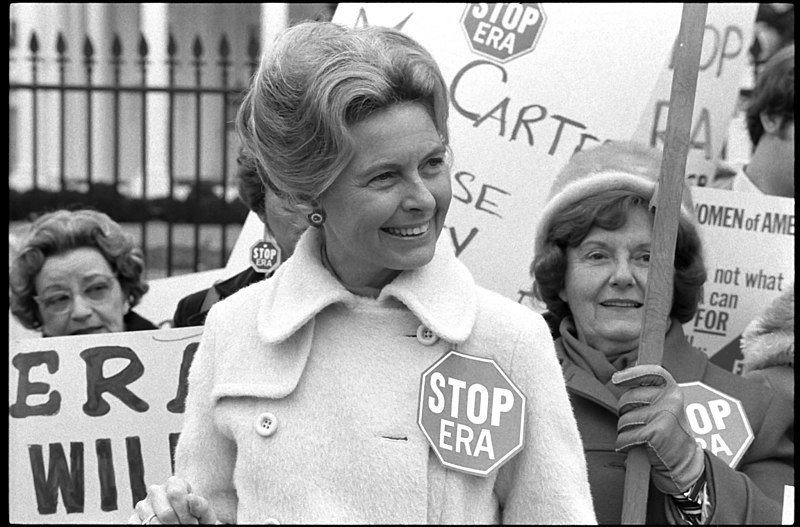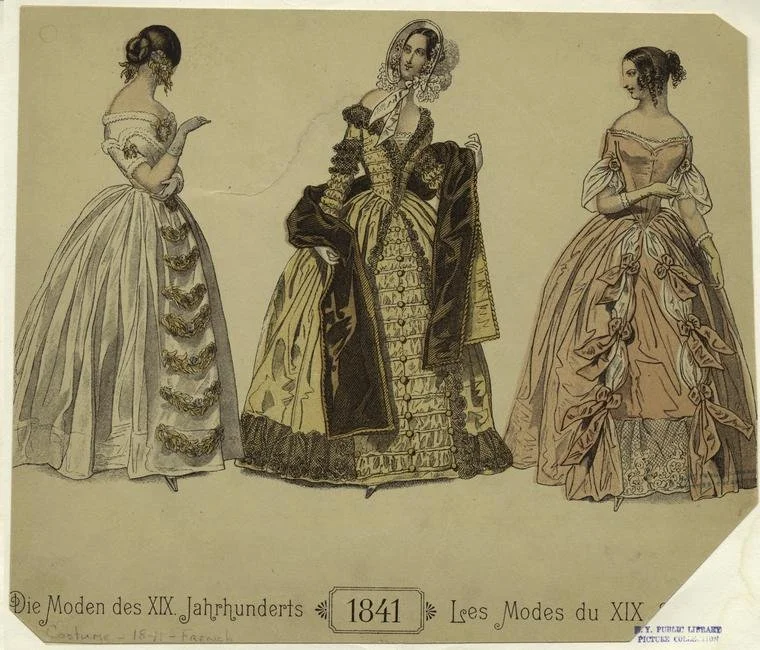Throughout the 1960’s, disparate portions of the feminist movement coalesced around several prominent leaders; such as Gloria Steinem, Bella Abzug, Shirley Chisholm, and Betty Friedan; uniting radical and more moderate portions of the movement into an effective national political machine. Utilizing strategies developed by the Civil Rights movement; notably the combination of social disobedience, political advocacy, and bringing cases to establish legal precedence; what became known as the second wave of feminism battered many of the old ideas of gender norms into oblivion. The movement successfully pushed forward and accomplished many of its goals; such as equal access to jobs and education, reproductive rights, women’s safety, and so much more; effectively creating the more equal society which we live in today. The crown jewel of these efforts was to be the Equal Rights Amendment (ERA), which would enshrine the central tenants of the movement in the U.S. Constitution.
By 1972, many of the goals of the women’s movement were not seen as bipartisan issues. With the exclusion of what were seen at the time as some of the more radical feminist positions, such as abortion, both parties and the general public tended to be supportive of women’s issues. Democrats saw it as a way to appeal to the more liberal portions of their base, and the Republicans saw it as a good place to compromise in order to get things they wanted, such as tax reform. As a result, the ERA passed Congress by wide margins in both houses. Within a year, 30 of the needed 38 states had ratified the amendment, and everyone expected it soon to be part of the constitution. It was at this point that Phyllis Schlafly appeared on the scene.
Phyllis was a staunch conservative upper class housewife from Illinois, who if she had been supportive of feminist causes, would have been lauded by them as proof of what women could accomplish when given the opportunity. Well educated, Phyllis was heavily involved in national politics throughout the 1950’s and 1960’s, penning books and reports read by millions, and inserting her moralistic stance at every opportunity into Republican politics, including unsuccessfully running twice for Congress. She also kept her basement full of food in case of a nuclear war, which is probably why by 1972 she spent most of her time talking about the importance of avoiding nuclear disarmament. However, sensing an opportunity for real political influence, she shifted her focus to the ERA. Utilizing connections she had established via years of writing a conservative newsletter, Phyllis began a grass roots campaign to stop states from ratifying the amendment.
Believing the ERA well on its way to ratification, the feminist movement by this time had shifted its focus to pushing other issues, such as reproductive rights. As a result, the political clout they had built up over the past decade was poorly positioned to counter the sudden assault. In a surprisingly short amount of time, Phyllis managed to build a coalition of middle and upper class housewives and working lower class women, exploiting a generational gap never fully addressed by the feminist movement. While the ERA enjoyed widespread support from younger women, who rightly wanted the opportunity to pursue careers as they saw fit, many older housewives, who had no job skills, feared that it would remove many of the protections they had as women regarding things like divorce, alimony, child support, and access to social security; many of which were gained by earlier iterations of the feminist movement. Phyllis, being one for political theater, of course took it a step further by claiming the ERA would lead to unisex bathrooms, same-sex marriage, an end to all traditional gender norms, women being forced to work and care for children, and people having fewer children. However, the most effective message she found was stating that the ERA would make girls eligible for the draft, which really struck a chord given Vietnam was still pretty front and center in people’s minds at the time.
While feminists staged rallies, sit-ins, and even hunger strikes to try and convince state legislators to ratify the ERA, Phyllis and her group sent them baked goods. Support for the ERA in many states plummeted. Between 1973 and 1977, only five states ratified the ERA, while another four states rescinded their ratification. The feminist movement attempted one last push for ratification, managing to get the deadline extended from 1979 to 1982, but no other states even took up the issue. Instead, women’s equality became constitutionally protected under the 14th amendment thanks to a series of Supreme Court cases brought by Ruth Bader Ginsburg and other feminist lawyers.
Though defeated in passing the ERA, the second wave feminist movement did manage to notch many other accomplishments throughout the 1970’s, including establishing reproductive rights. However, the powerful political coalition broke apart and became deeply divided in the 1980’s due to disagreements regarding sexuality, pornography, prostitution, lesbian rights, and transgender women. Though many of the groups continued to exist, none regained the political clout they once held. As for Phyllis, her role in the ERA’s downfall made her a powerful figure in social conservative circles, promoting what she referred to as “traditional American values” and effectively shifting the Republican party further to the right. She remained active in politics until her death in 2016.
Image: https://commons.wikimedia.org/wiki/File:Activist_Phyllis_Schafly_wearing_a_%22Stop_ERA%22_badge,_demonstrating_with_other_women_against_the_Equal_Rights_Amendment_in_front_of_the_White_House,_Washington,_D.C._(42219314092).jpg



